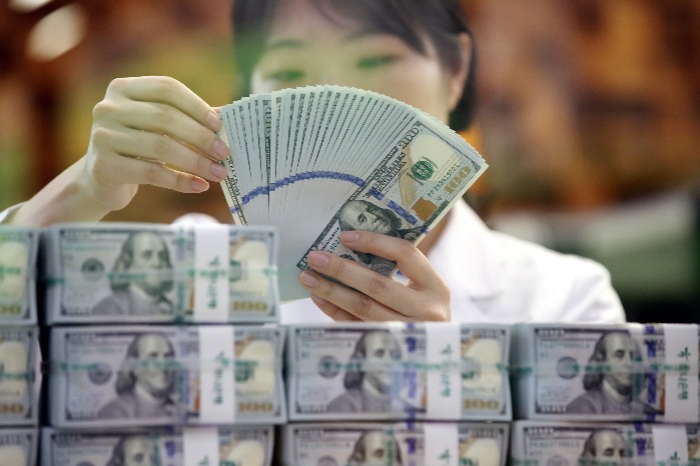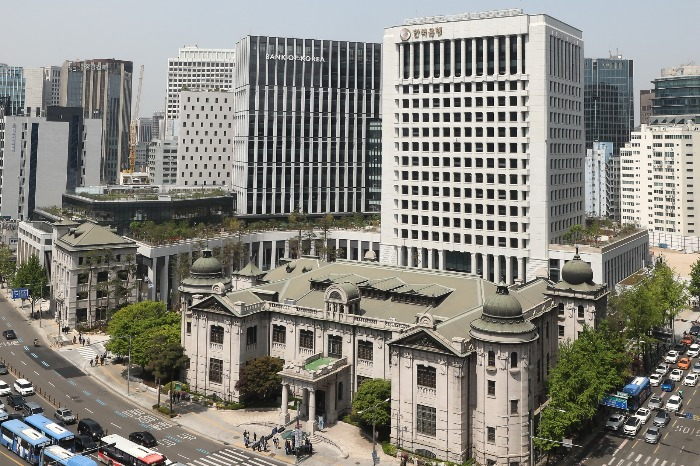S.Korea’s direct investment abroad hits record high in Q1 2023
Korea’s direct investment in foreign assets amounted to $663.7 billion in Q1, while foreigners’ direct investment in Korea dropped
By May 24, 2023 (Gmt+09:00)
LG Chem to sell water filter business to Glenwood PE for $692 million


Mirae Asset to be named Korea Post’s core real estate fund operator


KT&G eyes overseas M&A after rejecting activist fund's offer


Meritz backs half of ex-manager’s $210 mn hedge fund


StockX in merger talks with Naver’s online reseller Kream



South Korea’s net international investment position (NIIP) increased in the first quarter on the country’s record-high direct investment abroad driven by a recovery in global stock markets, according to data released by the country's central bank on Wednesday.
But an uptick in short-term debt, coupled with a fall in foreign direct investment in Korea, has raised concerns about the country’s fiscal soundness.
The outstanding amount of Korea’s investment in foreign assets reached $2.2 trillion in the first quarter ending in March this year, up $31.7 billion from the previous quarter, according to preliminary data released by the Bank of Korea (BOK).
The outstanding balance of Korea’s direct investment and portfolio investment jumped by $16.2 billion to the largest-ever $663.7 billion and by $36.7 billion to $776.6 billion, respectively, on the recovery in global stock markets.
The outstanding amount of foreign investment in Korea as of the end of the first quarter also added $30.0 billion on-quarter to $1.4 trillion, but offshore investors’ direct investment dropped by $1.9 billion, stoking concerns that Korea may be losing its appeal to foreign investors amid growing uncertainties over its export-reliant economy.
But foreigners’ investment in Korean equity securities expanded by $37.4 billion to $849.9 billion on the recovery of Korean stocks.
As a result, Korea’s NIIP, the difference between a nation's stock of foreign assets and foreign holding of the nation's assets, in the quarter amounted to $773 billion, $1.7 billion higher than the previous quarter.

Considering that the country’s total nominal economic output for last year was $1.6 trillion, Korea’s NIIP makes up 46% of its gross domestic product, meaning Korea is a creditor country, explained the central bank official on Wednesday.
Korea’s external assets and external debt in the first three months of this year dropped $500 million on-quarter and $300 million, respectively, to $1.0 trillion and $665.0 billion.
But the country’s short-term debt increased.
The ratio of Korea’s short-term debt to foreign reserves rose by 1.4 percentage points to 40.8% in the first quarter ending March this year, reversing its course from the previous two quarters despite a rise in reserve assets.
A higher ratio means weaker debt-serving capabilities or vice versa.
It fell to 41.1% and 39.3% in the third and fourth quarters of last year, respectively, from 42.3% in the second quarter.
The ratio of short-term debt to total external liabilities also inched up 1.1 percentage points to 26.1% over the same period. It dropped in the past two quarters.
Short-term debt jumped in the first quarter due to one-off increased short-term borrowings by Korean financial institutions' overseas operations to cover arbitrage trading in late March, the central bank explained.
Coupled with Korea’s ninth-largest foreign reserves in the world, the country's more than 40% NIIP to its GDP makes Korea’s fiscal condition sound despite the recent uptick in short-term external borrowings, the BOK official said.
Write to Jin-gyu Kang at josep@hankyung.com
Sookyung Seo edited this article.
-
 Korean stock marketFunds from West to emerging Asia power S.Korean stocks
Korean stock marketFunds from West to emerging Asia power S.Korean stocksMay 22, 2023 (Gmt+09:00)
3 Min read -
 Business & PoliticsS.Korea to offer subsidies to foreigners investing in advanced technologies
Business & PoliticsS.Korea to offer subsidies to foreigners investing in advanced technologiesApr 26, 2023 (Gmt+09:00)
2 Min read -
 EconomyS.Korea pledges steps to attract more foreign investment
EconomyS.Korea pledges steps to attract more foreign investmentMar 08, 2023 (Gmt+09:00)
1 Min read


